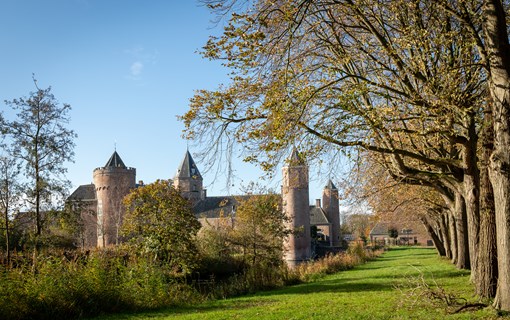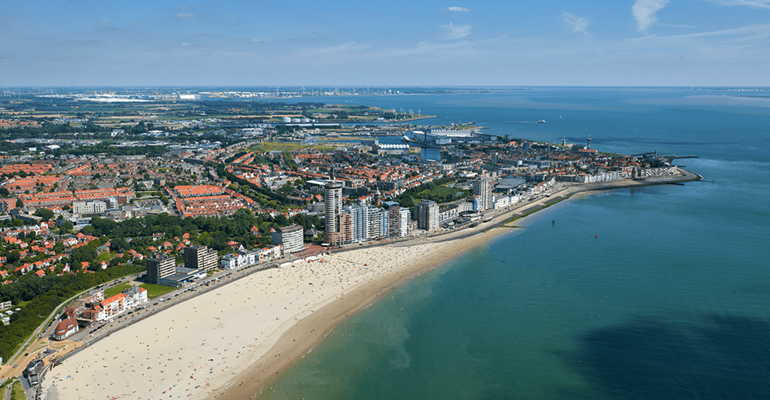
De Manteling woods
Oostkapelle

The scenery in Walcheren is breathtaking. Take, for example, the De Manteling van Walcheren, a woodland nature reserve situated right behind the beach. This nature reserve is also home to a medieval castle, Kasteel Westhove. The nearby nature reserve of Oranjezon is likewise a sight to behold. There are trails which take you through sheltered dune slacks, wooded groves, scrubland, sand drifts and dune grassland.
Did you know that Walcheren has the cleanest beaches in the whole of the Netherlands? Clean and safe beaches can be identified by the blue flag.
The appeal of Walcheren’s countryside is likewise found in its towns and villages. Take Domburg, for example, one of the oldest resorts in the Netherlands. There are larger towns on the island too: Middelburg is the provincial capital and Vlissingen, its main port. The promenade at Vlissingen is so close to the shipping lanes that you can almost touch them as they pass by. The historic town of Veere is well worth a visit too.
Whether you’re looking to discover its culture, historical highlights, shops or restaurants, find out more about Walcheren’s towns and villages here and what there is to see and do. Feel free to stay a bit longer to explore. Walcheren is rich in lovely places to stay overnight.
How better to discover Walcheren’s countryside and its prettiest spots than by bike or on foot? We have mapped out a number of routes for you. For example, the dune and woodland hiking trail (‘Struinen door bos en duin’) or the cycle route through De Manteling nature reserve and past Kasteel Westhove (‘Fietsen door de Manteling en historisch Veere’). Or you can delve into Zeeland’s more recent past and cycle past Second World War bunkers (‘Bunkerroute’). Veere has its own fascinating town trail too (‘Stadsontdekkingstocht Veere’).
Events take place regularly in Walcheren. Check out the events calendar to find out what’s coming soon.